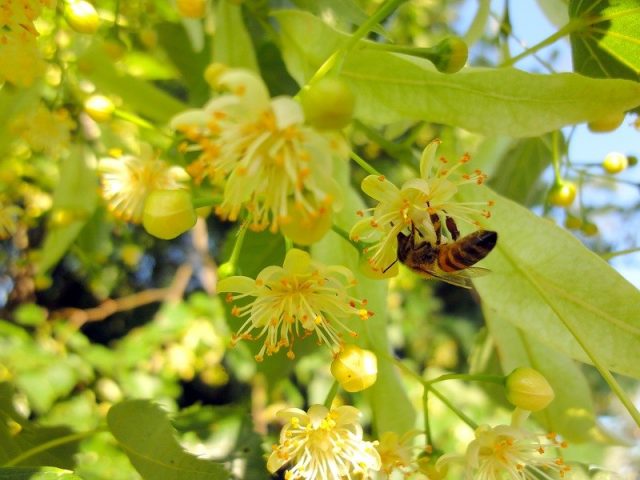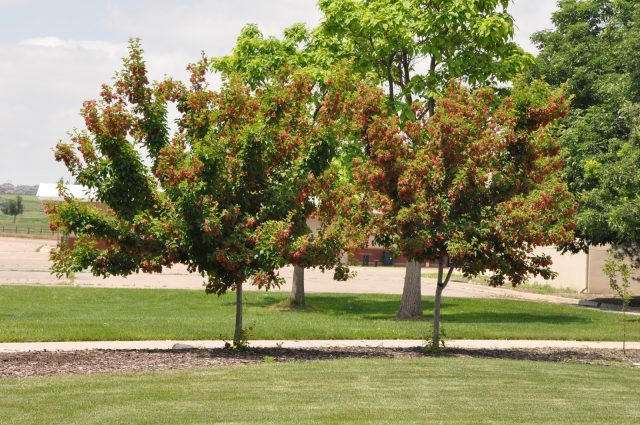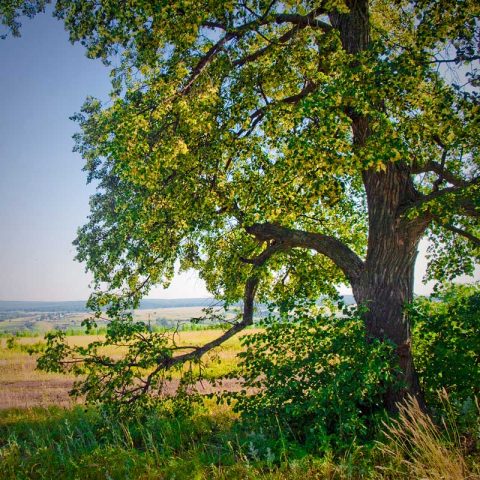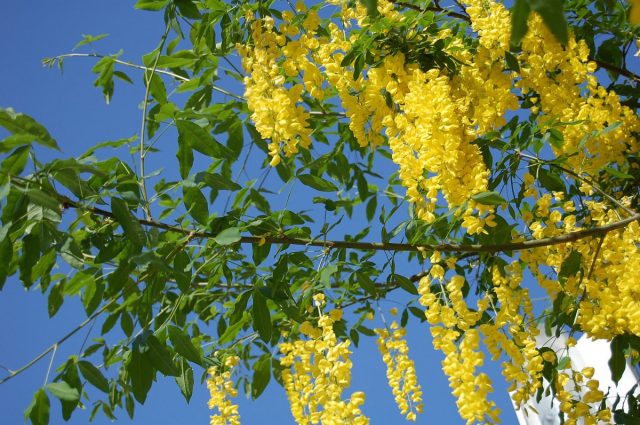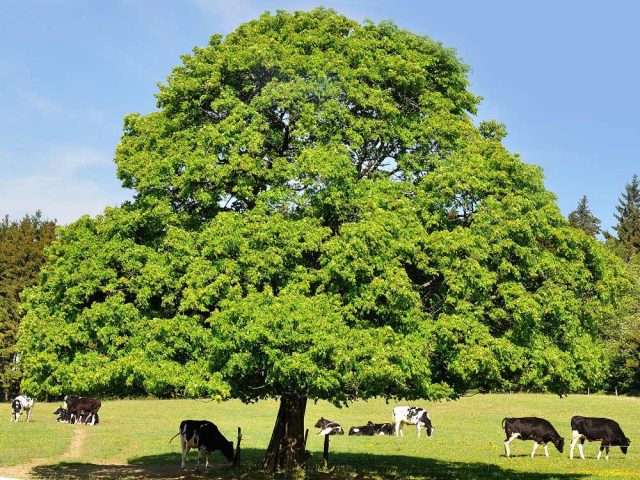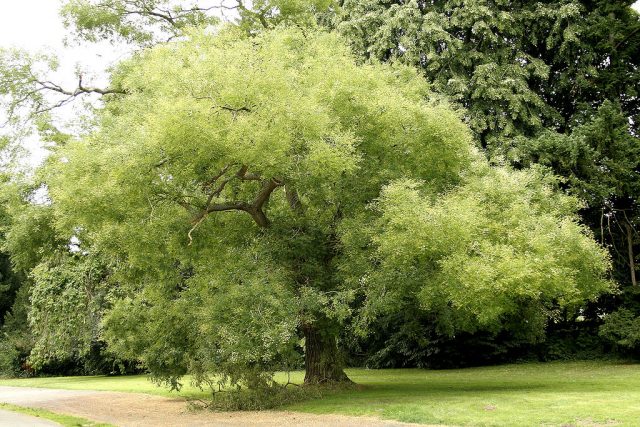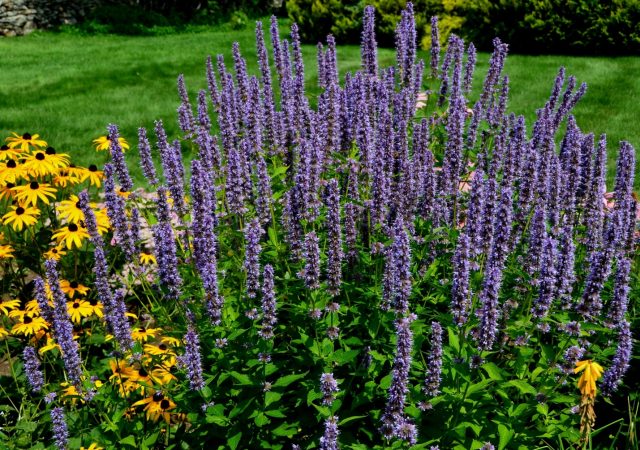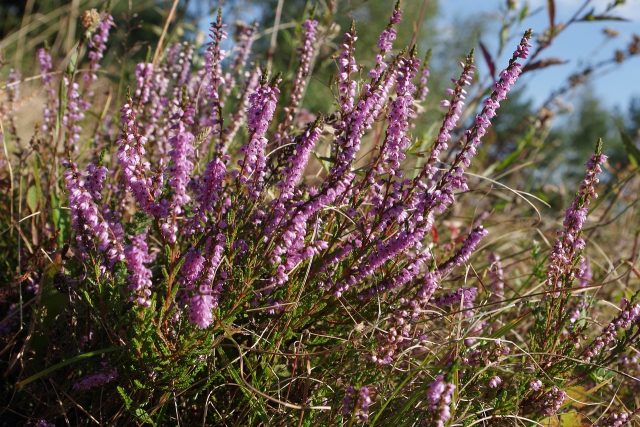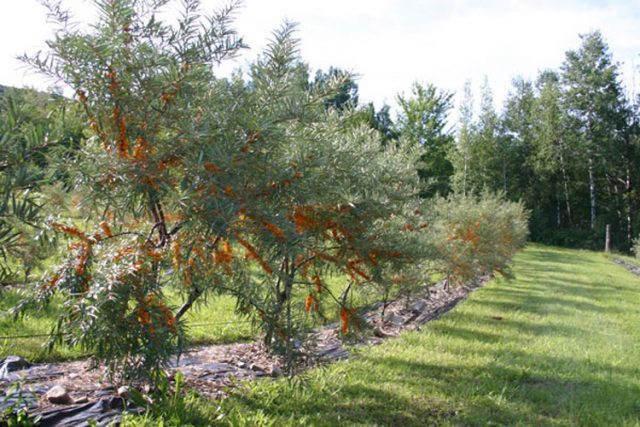Content
To ensure an uninterrupted bribe, beekeepers transport apiaries to forests, park areas. Chernoklen is used as a honey plant and other flowering shrubs. There are good honey plants among the trees. In each climatic zone, they are different. In pine and birch forests, there are heather and honeysuckle undergrowths. In the south of Russia, there is an elderberry and a tree.
What affects the taste of honey
The taste depends on the source of the nectar. By its origin, honey is:
- monofloral - collected from plants of the same species;
- polyfloral (mixed);
- padev.
Polyfloral honey varieties are obtained by collecting nectar from plants of different types. Honeydew honey bees are produced from sweet dew and the sugary secretions of aphids.
The taste is influenced by the time of collection, the richest is obtained at the beginning of flowering (from the first pitching). The presence of bee bread and propolis in the composition affects the taste. They give the product a bitter taste. The sour taste indicates that the honey did not have time to ripen, it was pumped out before the bees sealed the honeycomb with wax.
Why is nectar useful?
Nectar is a sugary liquid secreted by flower glands. In some stone fruit crops (apricot, sweet cherry), the nectary is not in the flower, but on the leaf petiole. For beekeeping, flower nectaries play an important role.
The nectar spreads the scent by attracting bees to shrubs and trees. Collecting it, they transfer pollen from flower to flower. Pollination occurs, resulting in the formation of fruits and seeds. Nectar promotes seed propagation of plants.
For bees, nectar is a food product. It consists of 3 types of sugars:
- fruit (fructose);
- grape (glucose);
- reed (sucrose).
The energy obtained from sugars is spent by bees on flying activities, processing nectar, and feeding the brood. The nectar contains trace elements, vitamins and even substances with antibacterial properties. They turn into honey, endowing it with healing properties.
What conditions affect the honey content of trees and shrubs
One and the same honey plant can produce nectar with different concentrations of sugars. Its quality and quantity are influenced by external conditions:
- air temperature and humidity;
- illumination;
- rain;
- wind.
For example, with a dry wind, linden ceases to produce nectar, other honey trees shrink flowers, which makes harvesting difficult. Prolonged rains inhibit flowering. Flowers of trees (shrubs) growing at the edge of the forest produce more nectar. They get more sunlight.
The flowers begin to release nectar when the air warms up to 10 ° C. Production increases with increasing temperature. When the temperature drops below 10 ° C, the bribe decreases. Air humidity affects the concentration of sugars and the viscosity of the nectar. Optimal ratios are observed at 60-80%. With increased humidity, the secret becomes liquid, the percentage of sugars decreases.
Classification of honey trees and shrubs
All honey trees are subdivided into groups. The following parameters are used for classification:
- climatic zone of the apiary;
- the nature of the bribe;
- the place where the shrub (tree) grows.
Quality bribe
Bribes are bees collecting nectar. He can be strong and weak. Its quality depends on the strength of the family, weather and flowering of honey plants. All honey plants are divided by the nature of the bribe into 3 groups:
- nectar pollen;
- pollen plants;
- nectar-bearing.
Shrubs and trees that do not emit nectar are called pollen plants, their flowers are inconspicuous and serve to collect pollen. Plants (trees, shrubs) nectar plants produce only nectar, nectar pollen plants produce both.
Pollen | Nectar pollen | Nectaros |
Aspen | Acacia | Blackberry |
Hazel | Linden | Marsh wild rosemary |
Spruce | Raspberries | Barberry |
Pine | Maple | Elderberry black |
Cedar | Shrub amorph | Heather |
Poplar | Elm smooth | Pear |
Alder | Bare elm |
|
Fir | Willow |
|
Oak | Hyssop |
|
Birch tree | Viburnum ordinary |
|
Rose hip | Cornel ordinary |
|
| Broom |
|
| Rowan |
|
| Currant |
|
| Bird cherry |
|
| Apple tree |
|
By places of growth
All nectar-producing trees and shrubs are classified according to where they grow. The group of forest melliferous plants is very diverse. Its composition depends on the type of forest (coniferous, mixed, deciduous).
The best bribes are taken in deciduous forests during flowering:
- hazel;
- elms;
- and you;
- alder;
- linden;
- oaks;
- maple.
In deciduous forests, many flowering melliferous shrubs grow:
- buckthorn;
- viburnum;
- forest raspberry;
- dogwood.
Mixed forests give abundant bribes if maple, linden, willow grow in them. On the edges and in the undergrowth of mixed forests, berry bushes grow, which are good honey plants: bird cherry, mountain ash, viburnum.
The group of garden honey plants is represented by fruit trees, berry and ornamental shrubs:
- all types of currants;
- raspberry varietal;
- cherry;
- cherries;
- pear;
- Apple tree;
- plum;
- apricot;
- peach.
The productivity of 1 hectare of a blossoming orchard can range from 10 to 50 kg.
By region
In every region of Russia, beekeepers plan honey harvest for the period of flowering of the main melliferous plants. Part of the honey plants in each region is represented by trees and shrubs.
Middle lane | Moscow suburbs | Ural | Siberia |
Hazel (April) | Red willow (April) | Apple tree (May, June) | Willow Goat (May) |
Norway maple (May) | Iva Bredina (April) | Cherry (May, June) | Raspberry (June) |
Willow Vetla (May), Willow Bredina (April) | Gooseberry (May) | Willow (April) | Rowan (June) |
Gooseberry (May) | Yellow acacia (May) | Raspberry (June) | Currant (May, June) |
Currant (May) | Apple tree (May) | Linden (July) | Siberian apple tree (May, June) |
Bird cherry (May) | Raspberry (June) |
| Yellow acacia (May) |
Acacia (May) | Small-leaved linden (July) |
| Honeysuckle (April, May) |
Plum (May) | Ash (May) |
| Bird cherry (May) |
Rowan (May) | Maple (April, May) |
| Kalina (May, June) |
Meadow viburnum (June) | Oak (April, May) |
|
|
Linden (July) | Poplar (April, May) |
|
|
The best honey trees
Flowering trees growing near the apiary provide bee colonies with pollen and nectar. In spring, bees collect a sticky substance - propolis from the buds of birch, poplar, alder and other trees. It plays an important role in the life of a bee colony. It is a building material, antibacterial and antiviral agent.
Chernoklen
The Tatar maple (chernoklen) is found in Altai, in the Trans-Urals, in Western Siberia, in the European part of Russia. Chernoklen blooms for 2 weeks, the maximum bribe falls on 5-7 days. The structure of the flower makes the nectar available. The productivity of this honey plant is 11 t / ha.
The nectar of the chernoklen tree contains a lot of fructose, so the marketable yield is higher than that from linden. Maple honey does not crystallize for a long time. It is light, with a light aroma rich in different shades. The taste is not sugary, very pleasant.
Linden - the queen of honey plants
Western Siberia, Western Europe, the Caucasus are regions where linden grows. The following varieties are considered the best honey plants:
- Amur;
- Manchurian;
- hearty;
- large and small-leaved;
- felt.
The productivity of 1 hectare of linden plantations is 0.6-1 tons of nectar. Trees bloom in the middle lane in July, the decade depends on the variety. In the southern regions, linden blooms in June.The duration of flowering of a tree is influenced by soil moisture.
At normal rainfall, it lasts about 20 days. In unfavorable weather conditions, the tree blooms for no more than 7 days. One bee colony can collect up to 10 kg of nectar per day. Linden honey has a pleasant taste, light, aromatic. It crystallizes, becomes a solid, homogeneous mass. It is considered the most healing one.
Acacia
Yellow acacia grows in the Krasnoyarsk Territory, Altai, Kemerovo, Irkutsk, Novosibirsk, Tomsk regions. In these regions, it is important as a honey plant. Bee colonies take the main bribe from this shrub. Early flowering. It falls on the end of May - beginning of June, lasts 10 days.
Up to 50 kg of honey is obtained from 1 hectare. Its characteristics:
- yellow color;
- the consistency is liquid, viscous;
- the taste is pleasant, there is no bitterness;
- does not crystallize for a long time.
In the southern regions (Krasnodar and Stavropol Territories, Astrakhan, Volgograd, Rostov Regions), varieties of white acacia grow. The productivity of this plant is 800 kg / ha. The maximum bribe is taken in the first week of flowering. It lasts 14-21 days.
Chestnut
In nature, there are two types of chestnut: sowing and horse. Both types of tree are honey plants. The quality of honey collected from the horse chestnut growing in the Caucasus and the Crimea is low. Honey is dark brown, smells weak, can be bitter.
A better product is obtained by collecting nectar from a subspecies widespread in Southern Europe. This type of honey is liquid, colorless. It crystallizes quickly and can taste bitter. Sowing or real chestnut grows in the forests of Southern Europe.
The flowering of the tree lasts 3 weeks. Bees collect pollen from male flowers, and nectar from female flowers. The daily productivity of a bee colony taking bribes from one sowing chestnut tree is 6 kg. The honey has a pleasant taste, aromatic, dark brown. Crystallizes in 2-3 weeks.
Sophora
Sophora japonica is a deciduous honey tree. Under natural conditions, it is found in China, Japan. Ornamental forms of shrubs are grown in Central Asia, the Caucasus, in the southern regions of Ukraine.
Sophora is a good honey plant. The tree blooms in July-August. It is long-lasting and guarantees a good bribe. Sophora's nectar productivity is 200-300 kg / ha.
The best honey shrubs
Honey shrubs growing near a stationary apiary improve the honey base of the apiary. With their help, beekeepers increase the productivity of bee colonies, ensure uninterrupted bribes during the warm season.
Hyssop as honey plant
Hyssop is grown as a honey plant. Bees collect pollen and nectar during flowering shrubs. The productivity of a 2-year-old plantation is 277 kg per hectare. It grows over the years. By the 4th year of life, the honey plant is 789 kg / ha.
The honey productivity of the shrub depends on the varieties of hyssop:
- with pink flowers - 121 kg / ha;
- with white flowers - 116 kg / ha;
- with blue flowers - 60 kg / ha.
Heather
Heather is an evergreen perennial. A shrub grows in the forest area of Polesie, the Carpathians. The honey plant blooms in 1-2 ten days of August, provides bee colonies with a bribe almost until October. Up to 200 kg of honey is harvested from 1 ha of heather thickets. A strong bee colony in favorable years produces 20-30 kg of honey during the flowering shrub.
Honey is viscous, so it is difficult to pump it out. It is dark red, tart, moderately aromatic, crystallizes slowly.
Sea buckthorn as a honey plant
The beekeeper will not consider sea buckthorn as a honey plant. Disputes about the honey productivity of this shrub do not subside. Most experts attribute sea buckthorn to pollen-bearing plants. In spring, bees collect pollen on the bush. She goes to the development of the bee colony.
Conclusion
Creation of an uninterrupted flow is the main task of the beekeeper, blackberry is like a honey plant, other shrubs and trees allow this to be done. The beekeeper has been forming a honey base for more than one year, observing local plants (shrubs, trees), and drawing up a flowering calendar.
